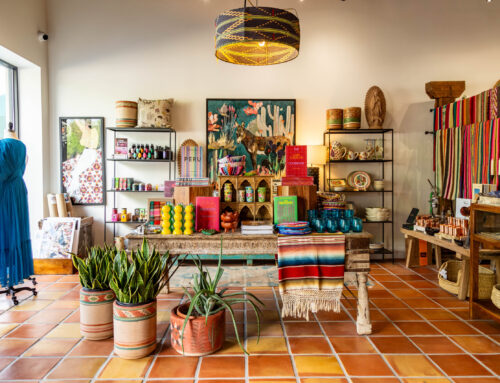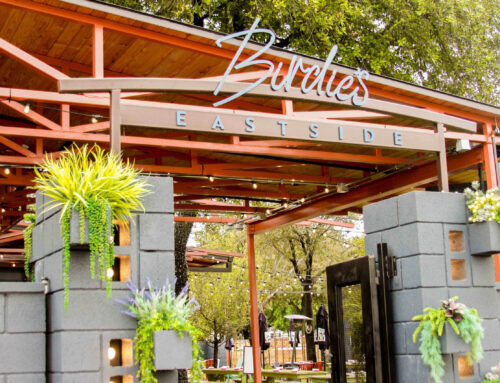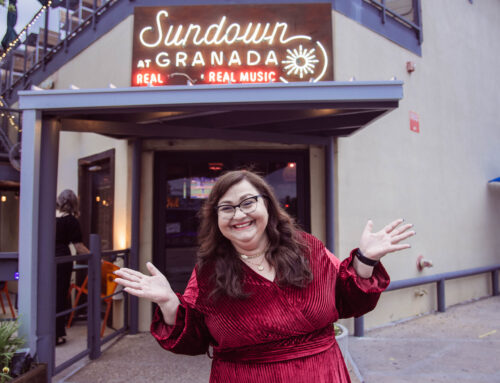Every time I pick up the business pages of my new telephone book, my eyes feast on a stunning photograph of Fair Park and the tantalizing quote: “It’s where Doak Walker galloped, Ramses the Great dazzled, and the Queen of England, America’s presidents, African kings and the Rolling Stones have all held forth.”
That list could go on and on. Fair Park also is where East Dallasites go to the Dallas Summer Musicals and other performances, take their children to the Museum of Natural History and six other museums, and enjoy events such as the State Fair, ArtFest, Cinco de Mayo, and the Cotton Bowl Classic.
What the elegant photograph doesn’t tell you is that Fair Park is a National Historic Landmark that has been declared a “Landmark at Risk” by the National Park Service.
It doesn’t show the leaking roofs, substandard electricity, shifting foundations and cracked walls causing further deterioration each day.
It doesn’t show the park’s priceless art and statues literally flaking away, badly in need of restoration.
We know it costs more to fix progressive home-repair problems such as leaking roofs next month rather than this month – and much more next year rather than this year.
It’s much the same with Fair Park: It is better and less expensive to complete these repairs today rather than tomorrow.
On Aug. 8, we have an opportunity to vote “Yes” to a one-year-only, half-cent sales tax that will raise $60 million to restore the park and the Cotton Bowl and provide needed improvements to parking and security.
These funds, in turn, allow $83 million of private investment in the park – to build a new Omnimax theater, a new wind on the Natural History museum, and a year-round “Midway Gardens” with food and drinks, rides and games.
The sales-tax plan shifts the burden away from Dallas homeowners and property owners and spreads it among Fair Park users. People from small towns who shop and play in Dallas will contribute. Suburban commuters who work Downtown will contribute. Tourists and conventioneers will contribute.
With bond-financing, we would pay interest for the next 20 years and end up paying twice as much. By voting “Yes”, we will be earning interest on our investment in Fair Park, not paying interest on it.
Instead of borrowing money and putting Dallas further in debt, we will simply pay for everything all in one year, a pay-as-you-go policy that many of our local, state and national politicians have forgotten.
We have an opportunity to create a year-round Fair Park that can draw a national and international crowed as a major tourist destination. Tourism is Texas’ second-largest business, and we aren’t getting our share. Instead, tourists are going to San Antonio and other points south.
But this isn’t just about tourists: With an improved Fair Park, our families will be able to visit major science and history museums, use Midway Gardens and celebrate special events in Fair Park.
How did Fair Park become a National Historic Landmark?
The park as we see it today was the dream of East Dallasite R.L. Thornton, who lived on Gaston Avenue, just past the Lakewood Country Club.
In 1935, Dallas (and the rest of the nation) was enduring the Great Depression. Thornton saw economic opportunity in the upcoming Texas centennial celebration.
By winning the celebration for Dallas, he put thousands of people back to work in construction jobs. He created jobs within Fair Park and tourism jobs throughout the city. Dallas pulled out of the Depression ahead of other Texas cities because of Fair Park and Thornton’s foresight.
Fair Park is important internationally. During the World Cup soccer tournament, 6,000 reporters from throughout the world will stay in Fair Park for five months. What will they tell the world about Dallas?
A television audience of 27 billion people (yes, billion) will watch the World Cup games. This is our chance to put Fair Park and Dallas on the international tourism map, as well as create an economic impact of $374 million annually to our City.
The improvements will mean thousands of construction jobs and jobs within the park and in the tourism industry. Not just this year, but every year.
Various politicians are putting it forward alternative ideas to pay for this renovation. None has been thought out.
Privatize the park, they say. You mean, turn our major civic asset over to a Six Flags-type operator? Charge every citizen a toll of $12 or $14 or more to utilize our City’s most popular park? Many of us couldn’t afford to use our own park.
Place a surcharge on State Fair tickets, they say. Don’t they realize the State Fair is a non-profit organization and every penny ever made has gone back into Fair Park? If it were possible to charge a higher ticket price, they’d be doing it.
Look into hotel-motel taxes, entertainment taxes and bond programs, they say. Don’t they understand these cost us more money? All borrow against our future.
Perhaps the most absurd suggestion is to get the money from DART. DART could not be expected to provide money for Fair Park unless its board participated in Fair Park decisions.
It would seem the DART Board has quite enough problems without adding another. And surely we don’t want to create another group similar to DART!
Ignore those tactics meant to confuse and delay. Remember that fixing up Fair Park NOW means:
Jobs for Dallasites – NOW.
Tourist dollars for Dallas economy – NOW.
International publicity and recognition – NOW.
Vote “yes” Aug. 8th!





